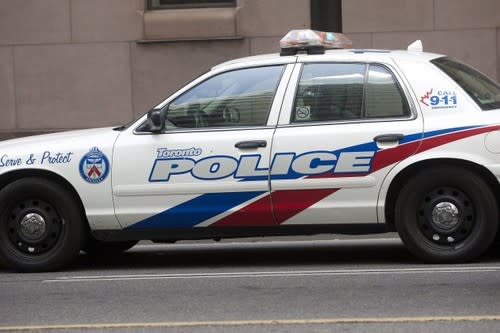 Canada Politics
Canada PoliticsWindsor, Winnipeg have too many police officers: Fraser Institute

Some of Canada’s largest cities have too many police officers.
That’s the finding in the latest Fraser Institute report analyzing police staffing levels and expenditures across the country.
The report, titled Police and Crime Rates in Canada, probes the somewhat perplexing relationship between rising policing costs and falling crime rates.
"Between 2001 and 2012, police officers per 100,000 of population in Canada rose 8.7 per cent while the crime rate declined by 26.3 per cent," notes the report written by Livio Di Matteo, an economics professor at Lakehead University.
"When ranked according to their officers per 100,000 population in 2013, the smallest numbers are for Saguenay, Quebec and Trois-Rivières, QC, each at 122 police officers per 100,000 of population. The largest numbers are for Winnipeg, Manitoba and Thunder Bay, Ontario, each at 189 officers per 100,000 of population."
[ Related: Winnipeg mayoral candidate Judy Wasylycia-Leis unveils safety platform ]
The author — rightfully — states that policing is much more complex than it was even ten years ago. He notes that more police time is being put into prevention tactics while some communities require more officers due to socio-economic factors.
But taking those factors into account he says that Saint John, N.B., Winnipeg, MB, and Windsor Ont. have the most “inefficient” police forces.
“Police fulfill a fundamental role in society and protect law-abiding citizens from criminals. But taxpayers can face higher costs for police than the crime rate or other socio-economic factors warrant,” Di Matteo, said in an accompanying press release.
“Of course, declining crime rates are a good thing, and some may attribute those declining rates to an increase in police spending. But in reality, some Canadian districts maintain substantially larger police forces than their crime rates warrant while other districts maintain smaller forces despite relatively high rates of crime,” Di Matteo said.
“As municipalities across the country struggle with limited resources, more analysis should focus on the nature and volume of police calls, the arbitration process involving police unions, policing technology and styles, and other factors that determine police staffing levels.”
[ Related: A safer Canada: Stats show most forms of crime in decline ]
The report, however, is already facing criticism from those being criticized.
Windsor Police Chief Al Frederick suggests that the Fraser Institute’s data isn’t up to date and didn’t look at “local circumstances.”
"Such local circumstances in Windsor are Casino Windsor, bringing in thousands of people a day into the downtown core," he told Windsorite.ca.
“The Windsor Police Service receives full funding from the Province of Ontario for twenty-one sworn officers in relation to the Casino. These funded officers are included in our staffing levels utilized by the Fraser Institute.
“Secondly, the concentrated number of liquor licence establishments in our downtown core, a result of the proximity to the State of Michigan with a drinking age of 21, requires significant police staffing and presence on a sustained basis.”
Winnipeg Police Chief Devon Clunis echoed his counterpart’s comments.
"The dynamics here in the City of Winnipeg we know are incredibly different than you might find in other cities,” he told Metro News.
"So you can’t, from abroad, just look at stats and say this is what the city would require based on what we’re seeing statistically.The nuances and the culture of what we’re doing in policing dictate otherwise."
[ More Politics: Stephen Harper, ‘tar sands’ a key theme at New York climate rally ]
Di Matteo's position is certainly against the norm: the common refrain from policitians — for decades — has been hire ‘more police officers.’
Regardless, the Fraser Institute is not the only think-tank raising concerns about rising policing costs in the midst of lower crime rates.
Earlier this year, the MacDonald Laurier Institute released a report noting that Canadians spend $12 billion, or nearly 1 percent of GDP on policing.
"Consider the fact that almost 40 percent of the Toronto Police Service’s workforce made Ontario’s 2012 “Sunshine List” of employees making more than $100,000, including six parking enforcement officers and a cadet in training," notes their report which decries strong police unions that ensure "budget-driven lay-offs are avoided, and that legislated and legal standards mean police equipment and facilities cannot be reduced."
"Consider also that much of uniformed officers’ time is spent waiting to give testimony in court, transcribing interviews, teaching CPR, transporting prisoners, or a hundred other duties that take them off the street. In some jurisdictions outside Canada, civilian investigators even handle burglaries, leaving full officers to take on more demanding cases.
"Canada needs a new debate about how we provide police services."
(Photo courtesy of the Canadian Press)
Are you a politics junkie?
Follow @politicalpoints on Twitter!


